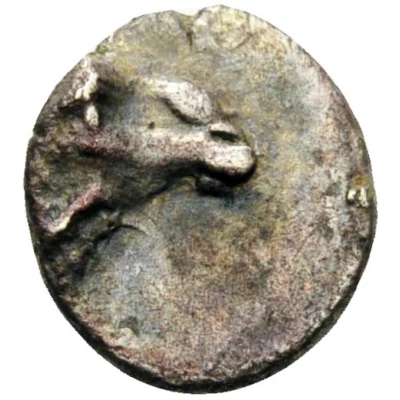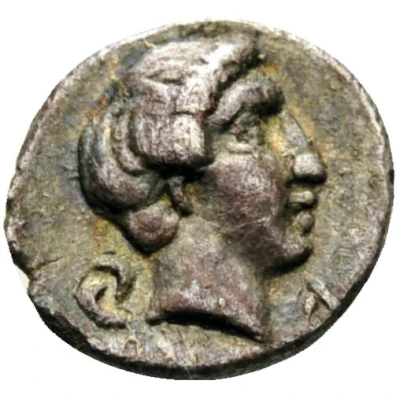


© Nomos AG
Hemiobol 410 BC - 390 BC
| Silver | 0.30 g | 7.0 mm |
| Issuer | Kasolaba (Caria) |
|---|---|
| Type | Standard circulation coin |
| Years | 410 BC - 390 BC |
| Value | Hemiobol (1⁄12) |
| Currency | Drachm |
| Composition | Silver |
| Weight | 0.30 g |
| Diameter | 7.0 mm |
| Shape | Round (irregular) |
| Technique | Hammered |
| Demonetized | Yes |
| Updated | 2024-10-10 |
| Numista | N#181495 |
|---|---|
| Rarity index | 86% |
Reverse
Male head to right. Behind, two enlaced crescents and before, Λ.
Script: Greek
Lettering: 𐋃 Λ
Comment
Klein 496-8 (uncertain); cf. SNG Keckman 866-902Previously attributed to Salamis on Cyprus, but after a find of a hoard in Asia Minor, these types are attributed to the undiscovered city state of Kasolaba. It is speculated that this city was near Halikarnassos but not much is known for sure.
https://en.wikipedia.org/wiki/Kasolaba
Interesting fact
One interesting fact about the Hemiobol coin from Kasolaba (Caria) is that it features a unique blend of Greek and Persian influences in its design. The obverse side of the coin depicts a bearded Persian king, while the reverse side shows a Greek goddess, likely Hera or Athena, making it a symbol of the cultural exchange and fusion that occurred during the Achaemenid Empire.